|
|
 Jen Jen |
 |
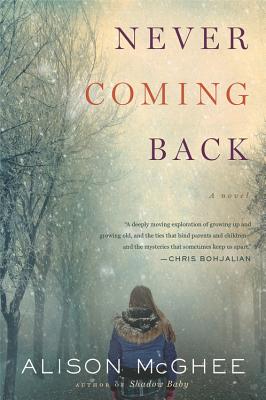
|
 |
Never Coming Back
Alison McGhee
Alison McGhee is a Minnesota author who has written books for just about every age, from board books to adult novels. Never Coming Back is a novel for adults, and the title refers to the mother of the protagonist in this story, who has early onset Alzheimers. The mother is Tamar; the narrator is her daughter Clara. Growing up, Clara clashed a lot with her mother. Clara’s father is not in the picture because Clara is the result of a party rape. Despite this violent beginning, Tamar chooses to keep and raise the baby the very best she can. She is often a staunch supporter of what I would call “tough love”. While Clara is in high school, she falls in love with a fellow student. After dating for a couple years, Clara witnesses, through a window in the house, her boyfriend and mother having an argument. The next day the boyfriend breaks up with Clara. Neither the boyfriend nor the mother will explain why. Once Clara graduates from high school, her mother and a friend conspire to get Clara into a college that is farther from home than Clara intended to go. This turns out to be a good thing as it’s at college that Clara meets the two people who will become her best friends for life, roommate Sunshine and fellow student Brown. Clara never dates again, never marries. She supports herself as the sole writer of a company she founded called Words by Winter. Clients contact Clara with a brief description of a person s/he needs to send some sort of communication to —a birthday card, or thank you note, that kind of thing. The tricky part is that the client almost always has a contentious or delicate relationship with the other person. $100 for 100 words, and Clara is plenty busy. Writers particularly, I think, will love Clara. She thinks in ways that are dominated by word usage—she can hear/see/feel when people italicize words or say them in bold font. She is, as she describes herself, a word girl. And I have to say, I connect with that. The narrative is well crafted and written in addition to the book being a good story. There is a lot of meat here for a book group—friendship, family, regret, forgiveness, and acceptance are all issues that a group could really sink its teeth into. Also, Never Coming Back was selected as a Midwest Connections Pick. This is a regional program highlighting good literature that has a tie to the Midwest.
|
| |
|
 |
|
Sold on a Monday
Kristina McMorris
(Jen began by showing a picture of four children sitting on steps under a sign that read “4 children for sale. Inquire within.” A woman is turning away from the camera. For copyright reasons, we can’t include the picture here, but you can see it at kristinamcmorris.com/sold-on-a-monday.
This photo first appeared in the The Vidette-Messenger of Valparaiso, Indiana on August 5, 1948. Author Kristina McMorris saw the picture and for years, it tugged at her. She did a little digging to find out the circumstances behind the picture, and when the nagging still wouldn’t quit, she wrote a fictionalized version in Sold on a Monday. McMorris’s novel takes place in 1931. We follow the lives of Ellis Reed, a new and struggling photographer/reporter and Lillian Palmer, a secretary at the newspaper where Ellis works. While off duty one day, Ellis uses the newspaper’s camera to take a picture of a girl and boy sitting on the front steps of a house with a sign reading “2 Children for Sale. Inquire within.” The editor of the newspaper sees the photos and wants Ellis to follow up with a story. Ellis does, with some hesitation, but the story is wildly successful and subsequently he lands a new job at a bigger newspaper. Lillian would love to be a newspaper reporter, but is stuck in her job as a secretary. She also has a closely-guarded secret: she works at the newspaper during the week, staying in a nearby rented room and returns to her parents’ home in another city on the weekends to spend time with her son. Lillian is a single mother. In 1931. You see why this is a problem. Ellis and Lillian end up tracking down together the whereabouts of the children in the photo after they are indeed sold. This is a well-crafted novel that would easily lend itself to great book group discussion. It includes an element of romance that might make this a good pick for a month a group is looking for a little lighter read. This book is published by Sourcebooks, a small publisher based near Chicago. |
| |
|
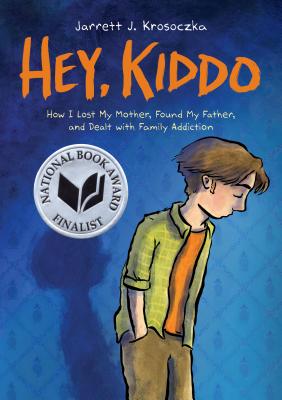 |
|
Hey Kiddo
Jarrett J. Krosoczko
Jen talked about Hey Kiddo at Night In/Morning In, and also reviewed it in our December newsletter. |
| |
|
 |
|
Tangerine
Christine Mangan
There are some books that booksellers aren’t sure where to shelve. Tangerine by Christine Mangan is one of those books. You could put it in fiction and novel readers will complain it really belongs in mystery. You could put it in mystery and the mystery readers will complain it really belongs elsewhere. In short, the booksellers end up hoping the book just winds up on the Bestseller list and we don’t have to decide. Tangerine is what I would call literary mystery. So what is it about? Alice, a Brit, and Lucy, an American, were college roommates and inseparable best friends at Bennington College in Vermont in the 1940s. The friendship ends abruptly when an incident takes place and the two go their separate ways. Alice moves to Morocco and marries John. She never expects to see Lucy again, but she shows up one day. She manages to wrangle herself an extended stay at Alice and John’s home, even though she and John do not hit it off. At all. Then, John goes missing. This is a suspenseful book in which you’re never really sure which narrator (it alternates between Alice and Lucy) can be believed. It’s absolutely guaranteed to generate strong feelings about the characters, which would make for great discussion. Tangerine was selected as an Indies Introduce title. Indies Introduce is a program in which the first about-to-be-published work of debut authors is submitted to a panel of indie booksellers, who read a whole lot of debut works and select the best ten. I would bet that you have read books that have been selected. For example, Educated by Tara Westover was an Indies Introduce title. The program is facilitated by the American Booksellers Association. It’s a truly terrific way to get brand new authors on the radar of readers. Right now, Sally is serving on the Indies Introduce adult books panel, so don’t be surprised if in the next couple years, she has some wonderful debut works to share with you. I listened to this on libro.fm which was a great way to experience this book! |
| |
|
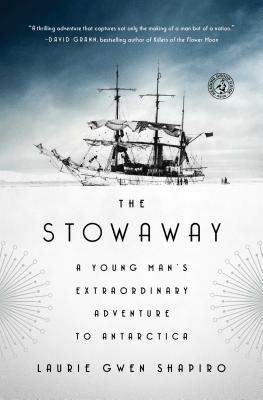 |
|
The Stowaway
Laurie Shapiro
In the 1920s, teenager Billy Gawronski was living in New York with his Polish immigrant parents and being primed to take over his father’s upholstery business. Billy had no interest in upholstery. He was interested in exploration and adventure. When Commander Richard Byrd’s Antarctica expedition docked its boat in the Hudson River before leaving on the expedition, Billy jumped into the river, swam to the boat, and hid on board. It wasn’t too long until he was discovered and escorted off the boat. He returned, was again discovered, and escorted off, and finally when he appeared the third time, Commander Byrd figured Billy might as well stay. Billy was given work to do on board to earn his keep. Once in Antarctica, the expedition set up a mini village, including, which I found fascinating, a library! It contained not just scientific volumes, but also novels for the crew’s entertainment. What I love about this book is I got to learn about some history I didn’t know, including some of the juicy bits about the smug Commander Byrd, and it was a relatively quick read. So often history, which I love, involves a 400 to 500 page commitment at a minimum. The author gave just enough background information about the time and people to give the reader a good understanding of events in about 200 pages. Laurie Gwen Shapiro has a background in journalism and documentary filmmaking, which I felt was an asset to this book. She kept the pace moving right along. For groups looking for an entertaining, true history account, this book would make a great pick. |
|
|
|
|
|
|
 Sally Sally |
|
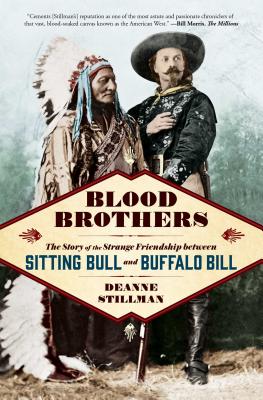
|
 |
Blood Brothers
Deanne Stillman
A couple of years ago, Northern Lights Opera Company in Park Rapids produced “Annie Get Your Gun.” It was a terrific show, and Annie Oakley, Buffalo Bill Cody, and Sitting Bull came alive on stage at the Armory. The setting for the play was the Wild West, a touring show which featured reenactments of historical events such as Custer’s Last Stand, as well as Native Americans, horses, buffaloes, and shooting exhibitions. Blood Brothers is about the unlikely friendship between Sitting Bull, the great Lakota chief and warrior, and Buffalo Bill, the one-time scout turned entrepreneur and showman. Annie Oakley is included as well.
The Wild West Show toured the United States and Europe. In some ways, it was the first “reality show,” and people flocked to see it. Here’s a brief description of a show in Buffalo, New York. Showmen weren’t able to get the herd of buffalo into the arena. “They escaped, and mayhem erupted. Indians chased them through the streets while dogs and children followed. A grizzly bear that had been caged in a railcar also broke loose, rushing for a vendor’s hotdogs.” People got their money’s worth that night!
As humorous as that account is, the content of the book is a serious look at the clash of cultures and struggle for control of the Great Plains region of our country by focusing on the friendship between Buffalo Bill and Sitting Bull, men linked by the connection each had with buffalo.
Cody had a charismatic, bigger-than-life personality. Sitting Bull was guided by visions and led his people with dignity, even when our government sought to contain him, limit his influence, and destroy his people’s way of life.
The picture on the front of the book is from a photograph taken in 1885 and used as a poster for the Wild West Show with the caption, “Foes in 1875, Friends in 1885.”
The book is well told, thoughtful, and thorough. It’s an example of non-fiction at its finest. |
| |
|
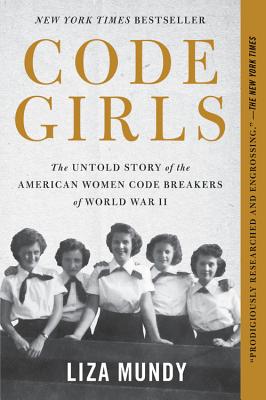
|
|
Code Girls
Liza Mundy
My husband and brother were cryptoanalytic specialists in the Army Security Agency in Viet Nam. Codebreakers. When I asked either one of them what they did, they’d look me in the eye and ask, “Do you have a need to know?”
So when this book came out, I was all over it. I’d finally find out what they were up to!
Well, I found out what they did, and a whole lot more. Before World War II started, our country was woefully behind in intelligence and counter-intelligence operations. This book tells how code breaking techniques were developed and how and why women were recruited to become code breakers. At the time, men were needed in the armed forces, so women were recruited and brought to Washington D.C. under strict secrecy to become code breakers. These women had excelled in mathematics and other courses of study in college, and their work as code breakers presented them with career opportunities for the first time.
The book makes clear that their work was vital to the war effort, shortening the way and saving lives.
I never thought I’d say that I found a book of military history fascinating—but I did! This book details how code breaking was developed in our country, and follows the lives of a number of women who became code breakers.
It was touching that the women took their vows of secrecy so seriously, that they’d never revealed what they did during World War II, even after the war was over. As Liza Mundy researched this book and told women she interviewed that their work was no longer classified, they told their families for the first time about their vital contributions to the war effort.
|
| |
|
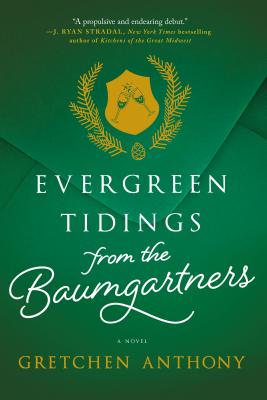
|
|
Evergreen Tidings from the Baumgartners
Gretchen Anthony
Have you ever read a Christmas letter that was as painful as poking yourself in the eye with a stick? For 30 years, Violet Baumgartner wrote that kind of letter, always starting “Evergreen Tidings from the Baumgartners,” and creating the illusion of a perfect family whose members all had perfect lives. That picture received its first challenge at the retirement party Violet planned and carefully choregraphed for her husband, “Dear Ed.” As a surprise to Ed, Violet invited a celebrity to attend and toast him. Violet was the one to be surprised, however, when the celebrity let slip that Ed and Violet’s daughter and her female partner were expecting a baby. Violet fainted from the shock, hit her head, and was rushed to the hospital with a concussion.
Afterwards, Violet was at home recuperating under the care of Ed, whose retirement made it convenient for him to be home, looking after her. And snacking.
The enforced rest made Violet crazy. In case you haven’t guessed, Violet had control issues. It makes her crazy that a committee she chaired at church is continuing its work without her, and almost certainly will do things differently than she would have. And then there’s the issue of Violet’s “need” to discover the identity of the sperm donor who fathered her coming grandchild. And her decision to contact the parents of her daughter’s partner, leading to disaster.
Through it all, Ed keeps snacking, and Violet’s attempts to micro-manage the lives of everyone around her keep back-firing. There’s a scene at a sperm bank that’s worth the price of the book as Violet attempts to trick them into telling her the name of the sperm donor she’s been looking for.
The book has a complicated plot, multidimensional characters, and lots of humor. It contains the text of many of Violet’s Christmas letters, and somehow, when they’re not from people you know, you can appreciate them. The Baumgartners nearly fall apart—but somehow, they patch themselves up. Violet is controlling, contriving, and manipulative, but I thoroughly enjoyed spending time with her. I think you might, too. And by the way, author Gretchen Anthony is from Minnesota.
|
| |
|
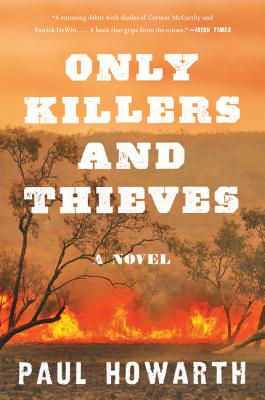
|
|
Only Killers and Thieves
Paul Howarth
I don’t know about you, but I grew up watching Westerns. Occasionally movies, such as How the West was Won, but most often television shows such as Gunsmoke, Bonanza, and Wagon Train. Almost without exception, those programs were about the westward expansion of our country. Cowboys, gunmen, and settlers were glorified. Native Americans, the original residents of the Great Plains, were often portrayed as savages or subservient, like Tonto on the Lone Ranger.
Only Killers and Thieves could have been set in the Wild West of my childhood, but it wasn’t. It takes place in the 1800s in Queensland, Australia, a time and place with many of the same issues as our own country in that period.
Tommy and Billy are young teen-agers, the sons of ranchers who are barely making it. Their neighbor is John Sullivan, the local land baron who is an associate of the Inspector of the Native Mounted Police. This is the group which carried out the genocide of Australia’s indigenous people.
Tommy and Billy return home one day to find their parents murdered. It appears that the murderer was Joseph, their aboriginal hired hand. Stunned and horrified, the boys turn to Sullivan. He and the inspector, with the boys, set out for revenge.
Tommy is appalled by their willingness to kill any tribal people they meet in the hunt for Joseph. There is much brutality and violence in the book, but it’s also an affecting coming-of-age story. Billy becomes totally committed to Sullivan and his actions, while Tommy’s developing conscience threatens the brothers’ relationship.
The book operates on many levels: as a Western, as a mystery, and as a coming of age story.
I found the level of violence in the book difficult, but I’m glad I stuck with it, because the story is powerful, and it left me with much to ponder. |
| |
|
 |
|
Paris by the Book
Liam Callanan
I’m a sucker for books about bookstores, and that’s what this one is. Leah and Robert fell in love with Paris through books. The Red Balloon for Leah, the Madeline books for Robert. After years of marriage and two daughters, Robert disappeared after leaving their Milwaukee home early one morning for a run. The police found no trace of him, and his credit cards, bank accounts, and cell phone showed no signs of use.
What to do?
Robert was a little eccentric, and he was fond of leaving notes with clues for his family while away from home. After his disappearance, they started looking and found such a note. Guess what? He’d purchased plane tickets to Paris for them. So, why not? Leah and the girls took off for Paris. The clues continued, and Leah and the kids found themselves in front of a shabby, struggling bookstore. The owner wanted to sell, and Leah made an offer on the spot. She had no experience in running a bookstore, or living abroad, but it’s fiction and anything is possible. The store included an apartment on the second floor, so the family moved in and Leah began running the store. It’s all improbable, of course, but I found myself suspending disbelief and being drawn into the story. (Okay, I didn’t suspend disbelief about the bookstore. Running one requires a lot more work and worry than Leah gave hers.)
The girls settled into school, becoming familiar with Paris, and learning French. Leah continued a low-key search for Robert and ran the store when it was convenient for her. The mystery of Robert’s disappearance runs throughout the book, but the focus is on the life Leah and her children built for themselves.
The themes of the book include the nature of commitment, the nature of creativity, and the ways in which individuals cope in the face of catastrophe, all wrapped in an entertaining story. I mean, it’s set in a bookstore!
I listened to this book on libro.fm, and it was an engaging listen. |
| |
|
|
|
|
|
|
|
|
|
|

Ann |
|
 |
|
Virgil Wander
Leif Enger
Virgil Wander has been in a car accident and is having difficulties with communication and just not being quite himself. Home for Virgil is Greenstone, a fictional Minnesota small town located on the North Shore of Lake Superior. Many of Virgil's friends and acquaintances are dealing with losses and challenges.
Some are striving to improve their situation, while others are just getting by as best they can. They are brought together by old films viewed at the Empress Theater, watching a newcomer named Rune fly his amazing kites, and their efforts to return vibrancy to the somewhat depressed town of Greenstone. Having lived most of my adult life in small towns, many of Enger's characters remind me of people I've known or would like to know. Virgil Wander is a blend of people and events that make for a very enjoyable read. |
| |
|
|
|
|
|
| |
|
|
|
|

Bob |
|
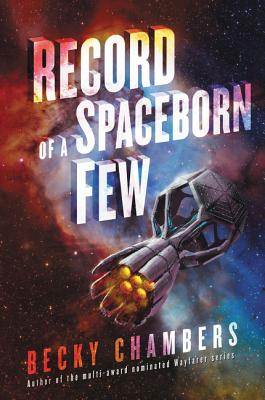 |
|
Record of a Spaceborn Few
Becky Chambers
Well, this one has all the potential in the world to be good Sci-Fi to the right reader. First it qualifies with a spaceship on the cover. And it has lots of good space talk and jargon (like anti-gravs.) It starts off with a catastrophe on a space freighter taking people on a deep space journey. The idea is that we’re populating other worlds that are so far away that it takes several generations to get there (no hibernation stuff here) and so the ships carry a lot of passengers….and they just lost 40,000 plus. The book goes into how to deal with this, and there is an investigation into the cause. The author follows six characters, moving from one to the next in a series of vignettes. These short pieces had some good “space” in them. So give it a whirl! |
| |
|
|
|
|
|

Gail |
|
 |
|
|
| |
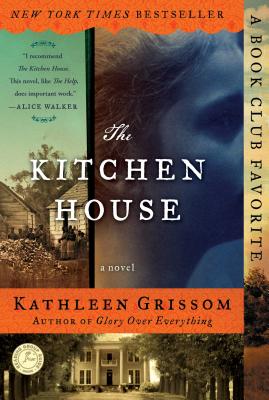
|
|
The Kitchen House
Kathleen Grissom
This story is told from two different viewpoints. First is Lavinia, an Irish girl who comes to America with her parents on Captain Pyke's ship. Lavinia's parents die on the voyage, so the captain brings Lavinia to his plantation. She is to work in the Kitchen House as an indentured servant. The other speaker is Belle, the daughter of the captain and a black servant. Belle is denied the privileges of the big house. Through the unique perspective of these two voices, the novel unfolds in a heartbreaking then ultimately hopeful story of class, race, deep secrets, and family bonds. I'm looking forward to reading the sequel called Glory Over Everything. If you liked The Help by Kathryn Stockett and The Invention of Wings by Sue Monk Kidd, you will also enjoy the New York Times bestseller The Kitchen House. |
| |
|
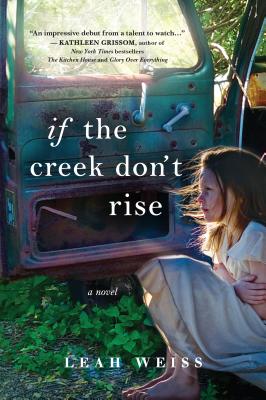
|
|
If the Creek Don't Rise
Leah Weiss
“Sadie Blue has been a wife for fifteen days. That's long enough to know she never should have hitched herself to Ray Tupkin, even with the baby.” This sentence was enough to draw me in to find out the whole story. Set in Appalachia, each chapter is told by a different person that knows Sadie, speaking to tell you what happens. I'm hoping the author will write more about the unusual and fascinating characters in this book. A good read. |
| |
|
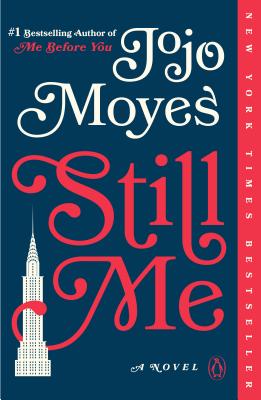
|
|
Still Me
Jo Jo Moyes
Louise comes to New York from London to be a companion for the second wife of super rich Leonard Gopnick. She soon realizes there is more to the job than she anticipated. I have tried several other titles by bestselling author Moyes without much success. However, this book grabbed me with lots of quirky characters: the world's crankiest neighbor and her dog named Dean Martin, the sisters who run the vintage clothing store, and even Louisa herself with her flare for unusual outfits. She also has the dilemma of keeping the two sides of her world together: a boyfriend back in London and a new man in New York. |
| |
|

|
|
Home on the Road
Catherine Watson
Home on the Road, which I enjoyed immensely, is a collection of travel essays. They are about all the different parts of the world where Watson traveled. She gives you just a quick view of the land and her encounters with people she meets. Sometimes she thinks, "I could live here forever.” But then the thoughts of her real home intervene so she is torn after wonderful experiences in a different locale. Catherine Watson is the retired editor of the travel section of the Minneapolis Star Tribune.
Note: although the book is out of print, we are able to secure used copies of it. Let us know if you’d like one.
|
| |
|
|
|
|
|

Hannah |
|
 |
|
|
|
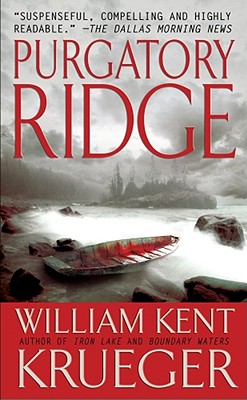
|
|
Purgatory Ridge
William Kent Krueger
Krueger says that the heart of the novel is based on an actual event, a freighter that sank in Lake Huron in 1966, with only one survivor. Krueger imagines that man to be Ojibwe, and places him in Cork O’Connor’s small town. A line of ancient white pines that the Ojibwe call The Grandfathers is in danger of being harvested, to the horror of the native people and outside environmentalists. The locals are more concerned with jobs, feeding their families by supplying the recently rebuilt lumber mill. The novel is drenched in the conflicts between the natural world and people, and celebrates the strength of family love.
|
| |
|

|
|
Death in the Andes
Mario Vargas Llosa
No, this isn’t a murder mystery. Well, the Corporal and the Civic Guard are trying to find out what happened to three men who disappeared under strange circumstances from a small village high in the mountains of Peru. But it’s much more than a “who done it.” The Nobel Prize winning author writes in a fresh and compelling way about brutal murders by the Shining Path of the 1990s, mythical monsters and gods, a simple mute who lives among a flock of vicuña, the love for a prostitute, miners and criminals, struggles and finding relief. The epilogue packs quite a punch.
|
| |
|
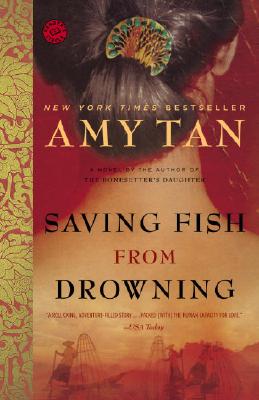
|
|
Saving Fish from Drowning
Amy Tan
The narrator is a recently deceased Chinese character who can, now that she's dead, see into the hearts and minds of everyone. She had planned a cultural tour starting in Lijiang and wending through Burma: or should it be called Myanmar? The tour goes on without her, but not well. We learn in a Note that precedes the book that the group will disappear without a trace. It's a book about the difficulty of identifying truth, and of sorting out how to help others when the world is so complicated.
|
| |
|
|
|
|
|
| |
|
|
|
|

Tim |
|
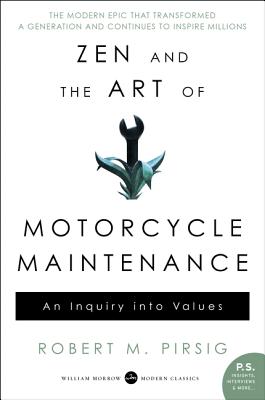 |
|
Zen and the Art of Motorcycle Maintenance
Robert M. Pirsig
Often book reviews are written in such superlatives as “stunning, insightful, original, timeless and universal.” I wonder whether these words still have any meaning after being so liberally used. In this particular case, I came to Zen and the Art by accident. The ‘accident’ continued after the first five pages. This book put to rest a roiling mass of unresolved unease, having to do with some important events in my life. Now, before you think I’m going to burst into a long string of those shop-worn superlatives I’ve just ridiculed, let me say, if you’re open to it, this classic will change perspectives for you. For example, the ancient Greeks “saw the future as something that came upon them from behind their backs with the past receding away before their eyes.” Doesn’t that just make more sense? |
| |
|
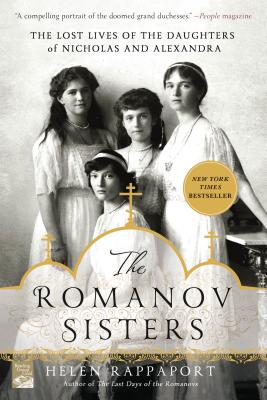
|
|
The Romanov Sisters
Helen Rappaport
I’ve read several books about the fall of the Romanov Family in Russia, but those books generally talk about everyone but the four daughters of Nicholas and Alexandra. Rappoport, focuses on the lives of the four girls, their education, their relationships with their parents, and what surprised me the most, their little-known isolation. Tsar Nicholas, and his wife Alexandra, struggled mightily to raise the girls free from as much of the influence of their wealth and position as possible. Trying so hard to accomplish this, their parents succeeded, perhaps too well, in that the young ladies were less able to understand the symbolic position they occupied as the Revolution assumed power. Frankly, I think their understanding this wouldn’t have made any great difference in the outcome. But to me it makes their ‘victimization’ (murder) all the more chilling. The book was a good read, and it happened nearly exactly one hundred years ago… not that long ago at all! |
Would you like to be a guest reviewer?
Email Sally at sally@beagleandwolf.com |
| |
|
|
|
|
|
— page top —
|
|



 Jen
Jen



 Sally
Sally




















